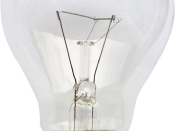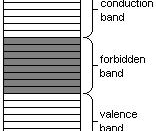Investigation into the factors that affect the resistance of a wire
PLAN
INTRODUCTION
Resistance is something in a circuit which slows down the current. Usually, the voltage and the resistance are balanced, but if you increase the resistance, less current would flow and if you increased the voltage, more current would flow. Resistance is measured in 'Ohms'.
Factors which affect resistance are: (of a wire)
÷ Thickness
÷ Temperature
÷ Length
÷ Width
÷ Material
It will be necessary for me to control these factors during my experiment, however I am going to investigate the length of the wire and how if affects resistance only.
Resistance = voltage
current
CONTROL OF VARIABLES
The following variables will need to be controlled in my experiment:
Temperature- to keep the temperature the same, I must keep the flow of current the same to keep the temperature down. When the current goes through a wire, the heat increases.
Temperature will affect the light bulb resistance to even out.
Length- Different lengths will affect resistance because there will be more or less area for the electrons to flow and so the current may vary.
Width- keep it the same, thinner wire has more resistance than thicker wire
Material- to make the experiment reliable I must use the same material through out the experiment otherwise (I will be using nichrome wire as my material).
TRIAL RUN
I am going to do a trial run because I want to decide on a circuit design, the amount of current I am going to set it to, the lengths of wire I am going to set it to. I want to take some results to find out what current to use.
Here is the circuit which I have designed for my experiment, it will measure the resistance of the...


